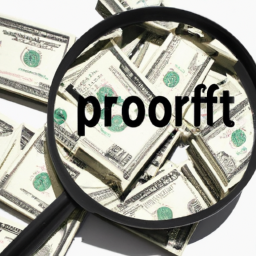Have you ever thought about starting a blog? You may have come across blogs while surfing the internet and wondered what they’re all about. Well, let me tell you, blogs are more than just online journals or personal diaries. They’ve evolved into powerful platforms for sharing information and connecting with a target audience. In this article, we’ll delve into the world of blogging and explore the steps to start a successful blog. So, if you’re curious about blogging and want to learn more, keep reading!
Blogging is all about creating and sharing valuable content on a specific subject. It’s a way for writers, or bloggers, to express their opinions and knowledge while connecting with their readers. The main goal of a blog is to engage with an audience and increase website visibility. To do this, blogs need to be regularly updated with fresh content, and readers should be encouraged to interact through comments and social sharing.
In addition to engaging content, blogs have specific features like publishing dates and tags, making it easy for readers to navigate and discover related posts. It’s a skillful and creative process that involves writing, publishing, linking, and sharing content. Blogging has become popular not only as a source of information but also as a way for businesses to engage with customers and as a platform for personal expression.
Now that you have a general idea of what a blog is, in the upcoming article, we will take you through the step-by-step process of starting your own successful blog. From choosing a blogging platform to creating engaging content, we’ll provide you with all the information you need to launch your blog and connect with your target audience. So get ready to embark on this exciting blogging journey with us!
Tips for Starting a Successful Blog
A blog is an online journal or informational website where I can share my views on a specific subject in reverse chronological order. It started as a personal diary but has evolved into a platform for communicating information online. The main purpose of a blog is to connect with an audience and increase website visibility. To start a successful blog, I need to focus on frequent updates, reader engagement, and specific features like publishing dates and tags.
Choosing a Blogging Platform
The first step in starting a successful blog is researching and selecting the right blogging platform. There are numerous platforms available, each with its own set of features and customization options. Some popular options include WordPress, Blogger, and Tumblr. Researching different platforms will help me understand the advantages and disadvantages of each, allowing me to make an informed decision.
Researching Different Platforms
When researching blogging platforms, I should consider factors such as ease of use, customization options, and the ability to monetize the blog. It is important to choose a platform that aligns with my goals and offers the features I need to create the blog I envision.
Comparing Features and Customization Options
Once I have narrowed down my choices, I should compare the features and customization options of each platform. This will help me determine which platform offers the layout, design, and functionality that best suit my blog’s needs.
Considering Ease of Use and User-Friendliness
Another important consideration when choosing a blogging platform is ease of use and user-friendliness. As a beginner blogger, I want a platform that is intuitive and easy to navigate. This will make it easier for me to create and manage my blog without feeling overwhelmed.
Selecting a Domain Name
After choosing a blogging platform, the next step is to select a domain name for my blog. A domain name is the web address that readers will use to access my blog. It should be memorable, relevant, and reflect the theme or topic of my blog.
Brainstorming Ideas
To come up with a domain name, I should spend some time brainstorming ideas that align with the content and purpose of my blog. I can consider incorporating keywords that are relevant to my niche to help with search engine optimization (SEO).
Checking Domain Availability
Once I have a few domain name ideas, I need to check their availability. There are several domain registration websites where I can search for the availability of my desired domain names. It is important to choose a domain name that is not already taken to avoid confusion and potential trademark violations.
Choosing a Memorable and Relevant Name
When selecting a domain name, I should strive for a balance between being memorable and relevant. A catchy and unique name can help my blog stand out and be easily remembered by readers. Additionally, choosing a name that accurately reflects the content of my blog will help readers understand what to expect when they visit my site.
Creating and Publishing Content
Once I have chosen a blogging platform and selected a domain name, I can start creating and publishing content on my blog. Creating high-quality, valuable content is crucial for attracting and retaining readers.
Identifying Blog Topics and Niches
To create compelling content, I need to identify blog topics and niches that align with my interests and expertise. It is important to choose a niche that I am passionate about and can consistently produce content on.
Developing a Content Strategy
A content strategy helps me plan and organize my blog content. It involves determining the frequency of posts, defining the topics to cover, and creating an editorial calendar. A well-planned content strategy ensures that I consistently produce valuable content for my readers.
Writing and Editing Blog Posts
When writing blog posts, it is important to consider my target audience and use a friendly and conversational tone. I should focus on providing informative and engaging content that is easy to read and understand. Editing is also a crucial step to ensure that my blog posts are error-free and well-structured.
Optimizing Content for SEO
Search engine optimization (SEO) plays a vital role in driving organic traffic to my blog. I should optimize my blog posts by using relevant keywords, creating descriptive meta tags, and implementing proper heading tags. This helps search engines understand the content of my blog and rank it higher in search results.
Promoting Reader Engagement
Engaging with my readers is essential for the success of my blog. It helps in building a loyal audience and encourages them to participate in discussions.
Encouraging Comments and Discussions
I can encourage reader engagement by actively inviting comments and discussions on my blog posts. This can be done by asking questions, seeking opinions, and responding to comments in a timely manner. Creating a welcoming and inclusive environment will make readers more likely to engage with my content.
Responding to Reader Feedback
Listening to and responding to reader feedback shows that I value their opinions and perspectives. Whether it’s positive feedback or constructive criticism, responding in a polite and professional manner helps build a strong connection with my audience.
Using Social Media to Share Content
Social media can be a powerful tool for promoting my blog and increasing its visibility. By sharing my blog posts on platforms like Facebook, Twitter, and Instagram, I can reach a wider audience and encourage them to visit my blog. Engaging with followers on social media also helps in building a community around my blog.
Updating the Blog Frequently
To keep readers coming back to my blog, it is important to update it frequently with fresh and relevant content. Establishing a consistent posting schedule helps in maintaining a regular flow of new posts.
Establishing a Consistent Posting Schedule
By establishing a consistent posting schedule, readers will know when to expect new content from me. Whether it’s posting daily, weekly, or monthly, sticking to a schedule helps in maintaining reader interest and engagement.
Offering Fresh and Relevant Content
In addition to updating my blog frequently, it is crucial to offer fresh and relevant content that adds value to my readers’ lives. By staying up to date with current trends, news, and developments in my niche, I can provide my audience with timely and valuable information.
Monetizing the Blog
Once my blog has gained some traction and has a dedicated audience, I can explore different ways to monetize it. There are several revenue streams that I can consider implementing to earn money from my blog.
Exploring Different Revenue Streams
Some common revenue streams for bloggers include selling ad space, becoming an affiliate partner, selling digital products, or using their blog as a content marketing tool for their own products or services. It is important to research and understand the various options available to determine which ones align with my blog’s niche and audience.
Selling Ad Space
One of the most popular ways to monetize a blog is by selling ad space to advertisers. This can be done through ad networks or by directly approaching companies or brands that align with my niche. It is important to strike a balance between ads and the user experience to avoid overwhelming my readers.
Becoming an Affiliate Partner
Another way to earn money from my blog is by becoming an affiliate partner. This involves promoting products or services through affiliate links and earning a commission for each sale or lead generated through those links. It is important to choose affiliate programs that align with my blog’s niche and offer products or services that I genuinely believe in.
Selling Digital Products
If I have expertise in a particular area, I can create and sell my own digital products such as e-books, online courses, or templates. This allows me to leverage my knowledge and skills to generate revenue directly from my audience.
Becoming a Successful Blogger
Becoming a successful blogger requires more than just creating and publishing content. It involves building a target audience, developing a unique voice and style, and networking with other bloggers.
Building a Target Audience
To attract and retain readers, it is important to identify and cater to a specific target audience. By understanding my audience’s needs, interests, and preferences, I can create content that resonates with them and keeps them coming back for more.
Developing a Unique Voice and Style
In the crowded blogosphere, having a unique voice and style helps my blog stand out. By injecting my personality and perspective into my content, I can create a connection with my readers and differentiate myself from other bloggers in my niche.
Networking with Other Bloggers
Networking with other bloggers in my niche can offer numerous benefits. It allows me to learn from experienced bloggers, collaborate on projects, and gain exposure to a wider audience. By engaging with the blogging community, I can build valuable relationships and expand my reach.
Enhancing Website Visibility
To drive organic traffic to my blog, it is important to enhance its visibility on search engines. Implementing SEO strategies, using relevant tags and categories, and optimizing images and meta descriptions are some effective ways to improve website visibility.
Implementing SEO Strategies
SEO plays a crucial role in ranking my blog higher in search engine results. By using relevant keywords, optimizing meta tags, and building quality backlinks, I can increase my blog’s visibility and attract organic traffic.
Using Tags and Categories
Using relevant tags and categories helps organize my blog content and makes it easier for readers to navigate and find relevant posts. This improves the user experience and encourages readers to explore more of my content.
Optimizing Images and Meta Descriptions
Optimizing images by adding alt text and compressing them for faster loading speeds helps in improving the overall performance of my blog. Additionally, writing compelling meta descriptions that accurately represent my content can entice users to click on my blog in search results.
Ensuring a User-Friendly Experience
A user-friendly blog is crucial for retaining readers and encouraging them to explore more of my content. Choosing a responsive design, testing website functionality, and creating clear navigation are crucial steps in ensuring a positive user experience.
Choosing a Responsive Design
In today’s mobile-centric world, it is essential to choose a responsive design for my blog. A responsive design ensures that my blog adapts to different screen sizes and devices, providing a seamless browsing experience for my readers.
Testing Website Functionality
Before launching my blog, it is important to thoroughly test its functionality. This includes checking for broken links, ensuring that all features and plugins are working correctly, and testing the loading speed of my blog pages. A well-functioning blog enhances the user experience and encourages readers to stay longer on my site.
Creating Clear Navigation
An intuitive and clear navigation system makes it easier for readers to explore my blog and find the content they are looking for. By organizing my blog posts into logical categories and using a user-friendly menu structure, I can improve the overall user experience.
Conclusion
Starting a successful blog requires careful planning, consistent effort, and the willingness to adapt and learn. By choosing the right blogging platform, selecting an engaging domain name, creating valuable content, and engaging with readers, I can create a successful blog that attracts a loyal audience. By monetizing my blog through various means and employing effective SEO strategies, I can turn my passion for blogging into a lucrative venture. By following these tips and consistently working towards improving my blog, success in the blogging world is within my reach.






